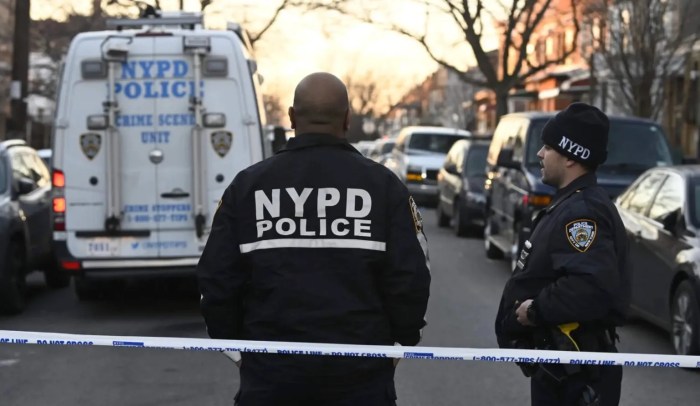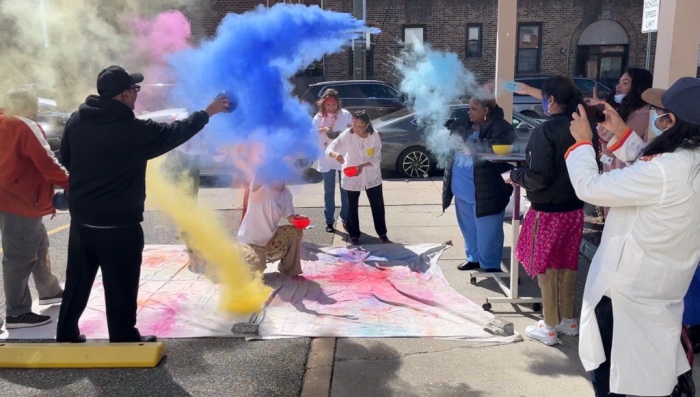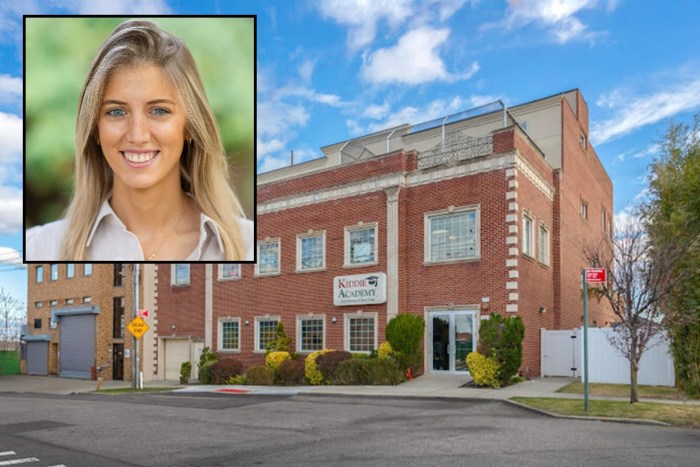By Gary Buiso
With the Department of Sanitation in charge of a property abutting Gravesend Bay, herons, harbor seals and striped bass—not to mention human beings—have reason to worry, a state lawmaker and a Brooklyn-based environmental group recently warned. In December, environmental investigators from the Urban Divers Estuary Conservancy investigated 1824 Shore Parkway and found what they believe to be a number of potential violations. “We documented several conditions at the site that we would consider quite egregious,” said Ludger Balan, executive environmental program director of the Urban Divers, a non-profit environmental organization. The property is the planned home of a controversial waste transfer station, one of several similar facilities planned citywide as part of the Department of Sanitation’s (DOS) Solid Waste Management Plan. The plan calls for trash to be hauled on barges and shipped away from the region. “We were astonished to find a number of abandoned trucks, in at least four, where garbage was still in all the trucks’ compactor,” Balan said, providing this paper with photographic evidence. At one location, the group found “a dozen or so containers of toxic organic chemicals… some were just left along the water’s edge,” he continued. The site is home to a small operation maintaining trucks and a small contained road salt storage. It neighbors the Marine Basin Marina, home to over 200 boaters. “Within these conditions, these chemicals can find their way leaching into the water,” Balan said. The site is the former home of the Southwest Brooklyn incinerator, which was razed in 2004. “People forget how bad it used to be. We remember,” Balan said. An area where the old incinerator stood formed a cesspool basin; another area revealed two “mysterious” gas canisters left abandoned and exposed to the elements, Balan noted. “Heaven knows how long these have been left there,” Balan wondered. Shown the photos, Kathy Dawkins, a spokesperson for the DOS, had only this to say: “The department’s 20-year Solid Waste Management Plan, which includes the Southwest Brooklyn Marine Transfer Station, after a comprehensive and thorough env-ironmental review and nu-merous public hearings, was overwhelmingly ap-proved by the City Council and then approved by the New York State Department of Environmental Conser-vation.” “We are moving forward with our plan that will meet all environmental regulations,” Dawkins said. While the DEC has approved the overall plan, it has not signed off on permits to allow the construction of the facility at this particular site. A recent report conducted by the University of Medicine and Dentistry of New Jersey warned that the bay’s marine wildlife could be endangered if the sediment is dredged, as is planned by the city to allow for more room for the barges. The report found dangerously elevated levels of lead and mercury in several soil samples taken from the bay. The fear is that if the sediment is dredged, the hazardous heavy metals could kill local wildlife, and endanger humans who might dine on fish caught there. Assemblymember William Colton, a member of a task force organized in opposition to the waste transfer station, offered some praise to the DOS. “The bottom line is this: The DOS is very good at doing what it wants to do, which is to pick up and bring garbage some place.” That’s where the compliments ended. He continued, “Managing garbage is not one of their strengths. They are very careless, and have a poor track record handling garbage once it’s at the site they are in charge of.” Colton said he had little faith much would change here, if the waste transfer facility arrives. “If they don’t maintain it before the transfer station is constructed, what makes anyone think they will do it differently once it is built,” he asked. “We have serious doubts whether we can depend on DOS to be environmentally careful,” Colton said.

































